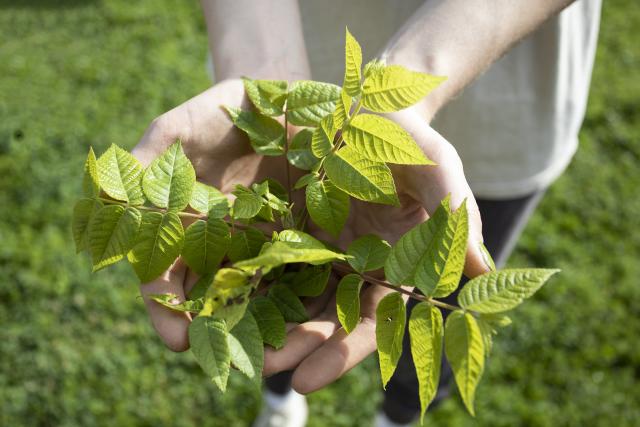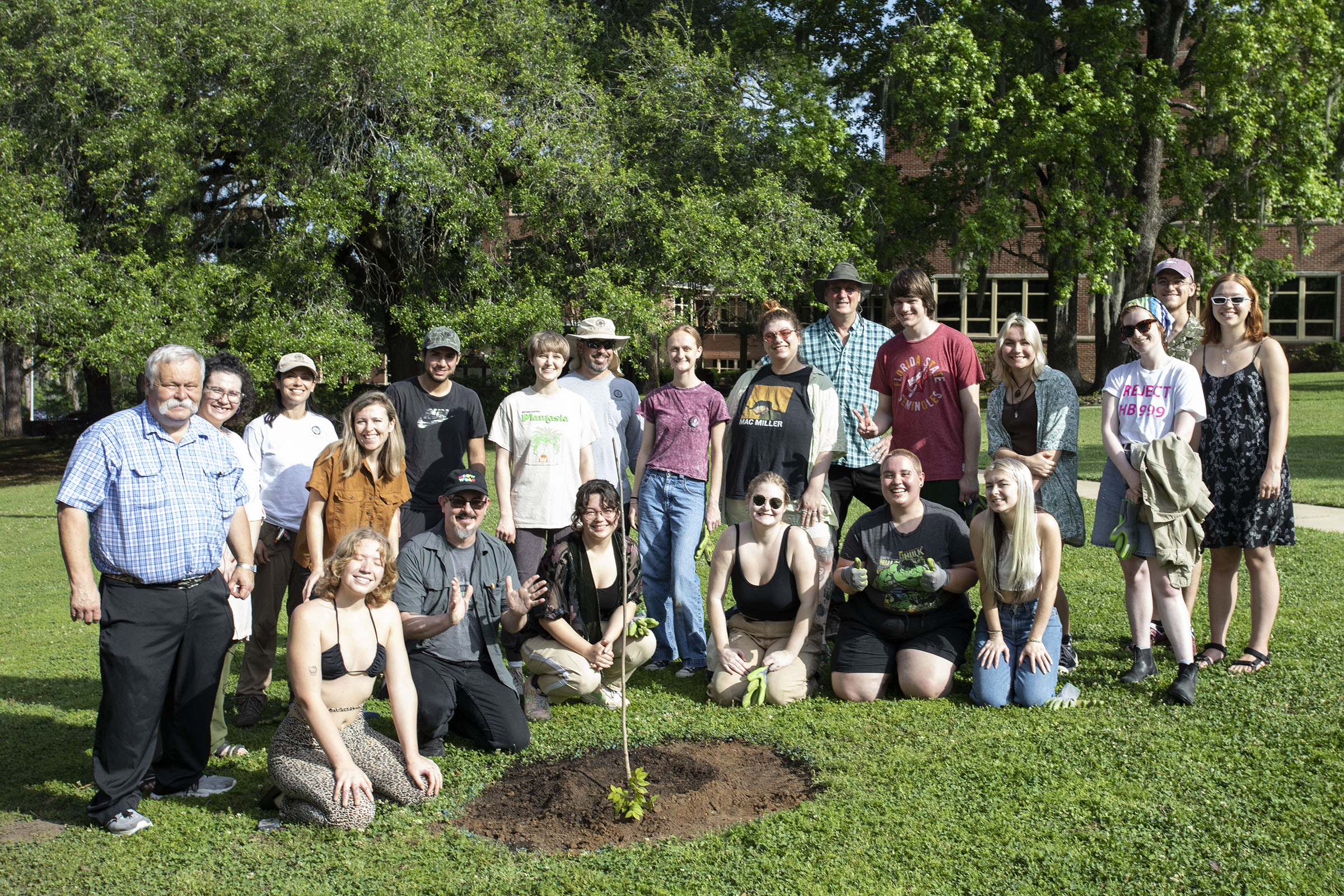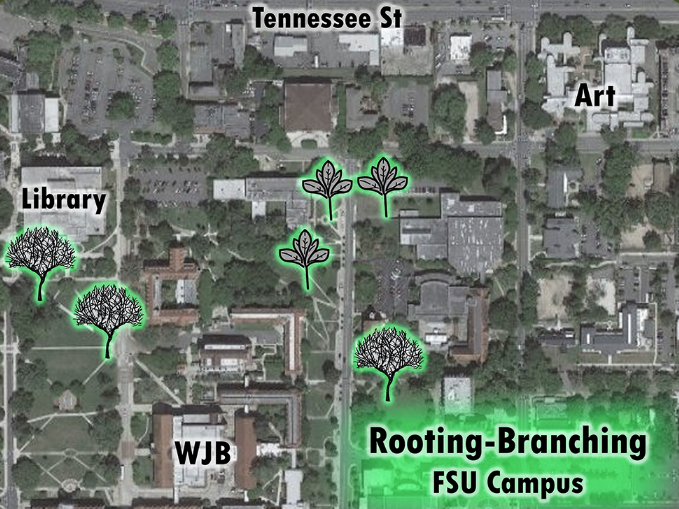Students Combine Art and Technology with Sustainability

In a unique cross-disciplinary effort, students from three courses joined forces to develop an innovative project that highlights FSU's Landscaping. Led by faculty members Dr. Katie Kehoe, Dr. Keith Roberson, and Dr. Andy Opel, this collaborative endeavor combined geolocative augmented reality (AR) technology with a socially engaged approach. The culmination of the project involved a tree planting action, contributing to sustainable infrastructure on campus.
FSU Grounds, the campus partner, played a crucial role in guiding and supporting the project. Their expertise helped ensure the project's alignment with FSU's campus grounds and landscaping requirements. The primary purpose of this collaboration was to provide students with a unique experiential learning opportunity that challenged them to observe and reflect on the natural environment as a source of inspiration and creative practice.
Sarah Evans, a third-year undergraduate student in Studio Art, said during the tree plantings, "The landscaping is one of my favorite things about going to school here so it’s cool to see the process."

The project also included the topic of sustainable infrastructure to campus by planting trees, teaching best practices for planting, and cultivating an understanding among participants of how trees contribute to sustainability and help mitigate the effects of climate change.
"It feels like we are investing in the future," exclaimed Craig Moore, a third-year undergraduate student in Studio Art.
Three trees within the FSU Arboretum, Stuart Pecan, Black Walnut, and Yaupon Holly, were selected as inspiration for content creation and the design of the geolocative AR socially engaged project. The Immersive Video Production class captured 360-degree videos of the tree sites. In the 3D Animation class, students created animated digital sculptures, which were integrated into the videos. Additionally, the Sculpture 2 class developed performative sequences as creative responses to the selected trees. During a public presentation, attendees participated in a socially engaged tree planting action.

Reflecting on their participation, Andy Mills, a third-year undergraduate student in Creative Writing, expressed their connection to the project: "The planting is making me think about time and all the time it takes the tree to grow and our connection to future students...and hopefully it will produce nuts!"
This project has had a profound impact on the campus community, engaging students across multiple disciplines and colleges. Students involved in this collaboration observed and learned about the diverse tree species in the FSU Arboretum. Additionally, students received instruction on how to plant a variety of trees, assess the contributions of specific tree varieties to sustainability, and determine their role in mitigating the effects of climate change.
"I feel a lot more connected to the trees now, and connecting it to art makes it relevant to more people," said Cassidy Millhouse, a second-year undergraduate in Studio Art.
Considering the success of the pilot project, the organizing faculty envisions expanding its scope. The future plans include highlighting noteworthy trees across Tallahassee, incorporating additional creative responses geocached at the site of these trees. The project aims to engage the broader FSU and Tallahassee communities in reflecting on sustainability and climate mitigation, appreciating how art can function as a platform to address these important issues.
To learn more about the Rooting and Branching project, visit https://rooting-branching.create.fsu.edu/.
To learn more about the Campus as a Living Lab program, visit sustainablecampus.fsu.edu/academics-research/campus-living-laboratory.

